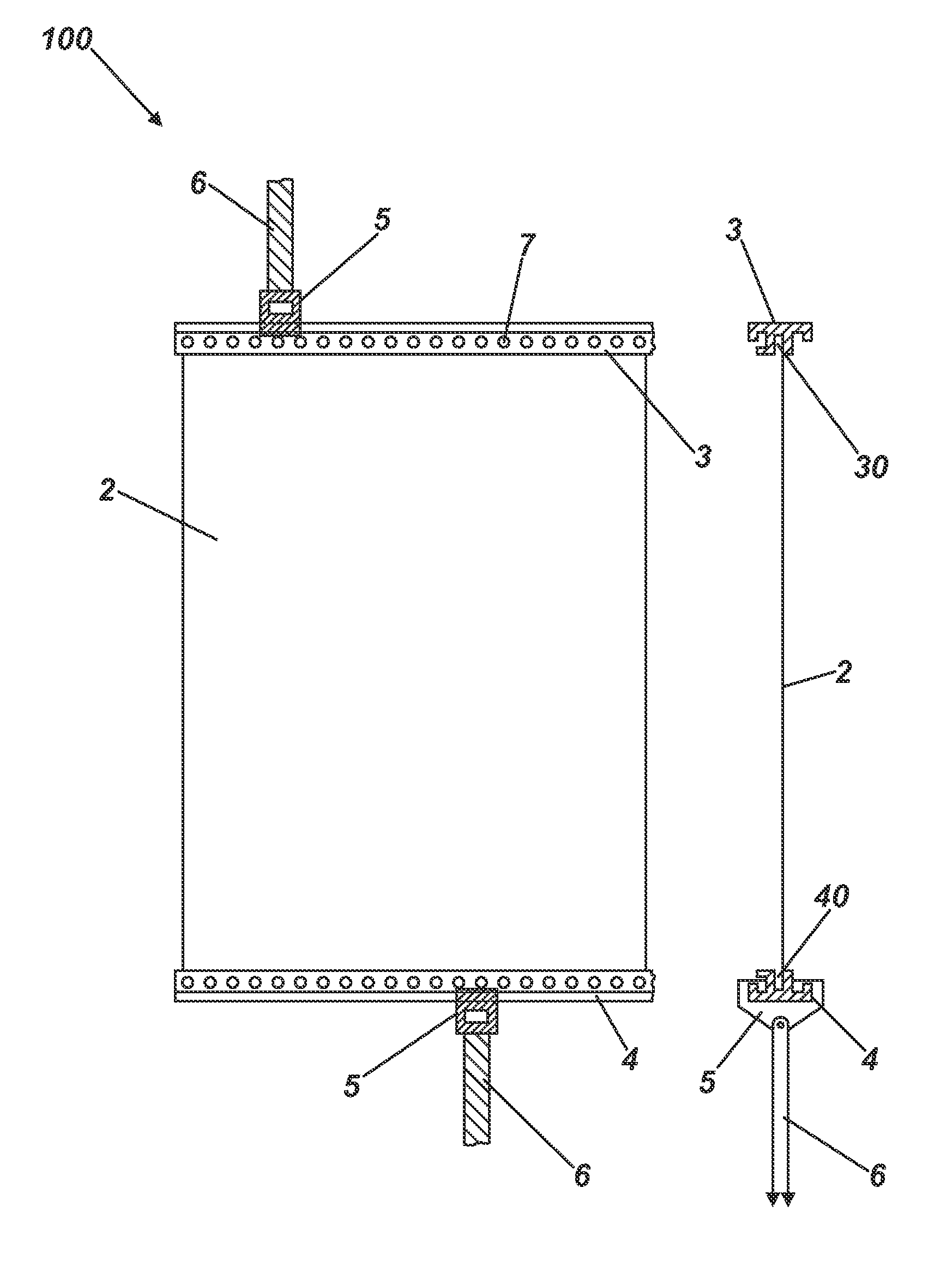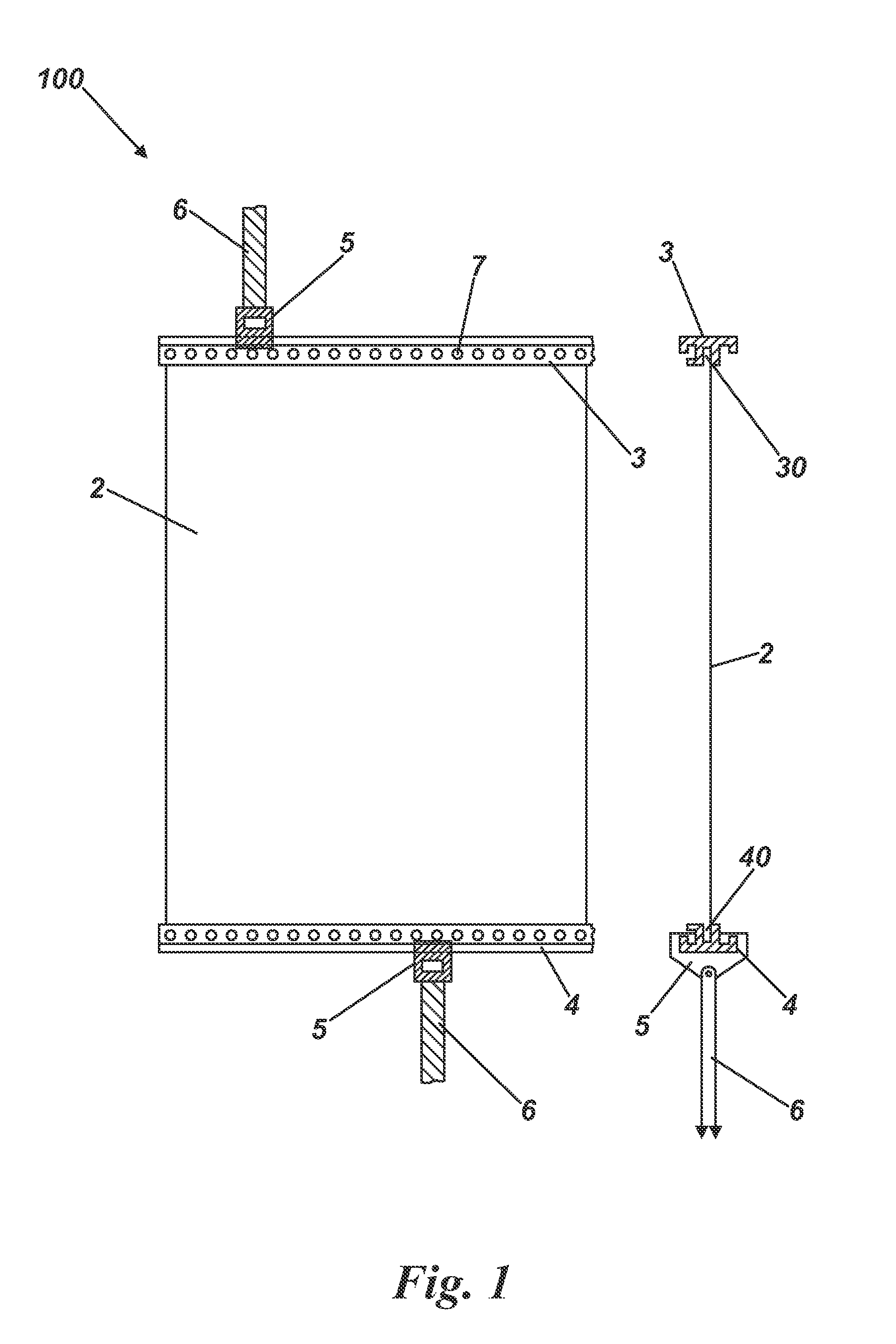Projection apparatuses and associated methods
a technology of projection apparatus and projection screen, which is applied in the field of projection screen and method, can solve the problems of distortion of projected image, affecting and inevitably forming wrinkles, and achieves the effects of improving the mechanical properties of stiffness and strength, reducing the difficulty of removal, and improving the viewed quality of imag
- Summary
- Abstract
- Description
- Claims
- Application Information
AI Technical Summary
Benefits of technology
Problems solved by technology
Method used
Image
Examples
Embodiment Construction
[0066]Referring first to FIG. 1, a projection apparatus shown generally as 100, comprises a polymeric projection screen 2, retention members 3, 4, tensioning brackets 5, tensioning straps 6 and a series of ultrasonic spot-welds 7. The screen 2 is shown as a foil and the retention members 3, 4 are each shown as an extruded or moulded plastic (e.g. PET) gripper bar although it will be appreciated that other means of construction could be envisaged.
[0067]In use, the screen 2 is inserted into the extruded channel 30, 40 of each of the retention members 3, 4 and then ultrasonically bonded to create the series of spot-welds 7. The ultrasonic bonding will be created by a portable ultrasonic welding device comprising an ultrasonic horn backed by a small hand-held anvil. The horn is attached via a cable to a high frequency ultrasonic generator capable of generating ultrasonic energy in the range of 20 to 40 kHz. Each spot weld may typically range from approximately 2 to 3 mm in diameter or g...
PUM
| Property | Measurement | Unit |
|---|---|---|
| Pressure | aaaaa | aaaaa |
| Length | aaaaa | aaaaa |
| Tension | aaaaa | aaaaa |
Abstract
Description
Claims
Application Information
 Login to View More
Login to View More - R&D
- Intellectual Property
- Life Sciences
- Materials
- Tech Scout
- Unparalleled Data Quality
- Higher Quality Content
- 60% Fewer Hallucinations
Browse by: Latest US Patents, China's latest patents, Technical Efficacy Thesaurus, Application Domain, Technology Topic, Popular Technical Reports.
© 2025 PatSnap. All rights reserved.Legal|Privacy policy|Modern Slavery Act Transparency Statement|Sitemap|About US| Contact US: help@patsnap.com



